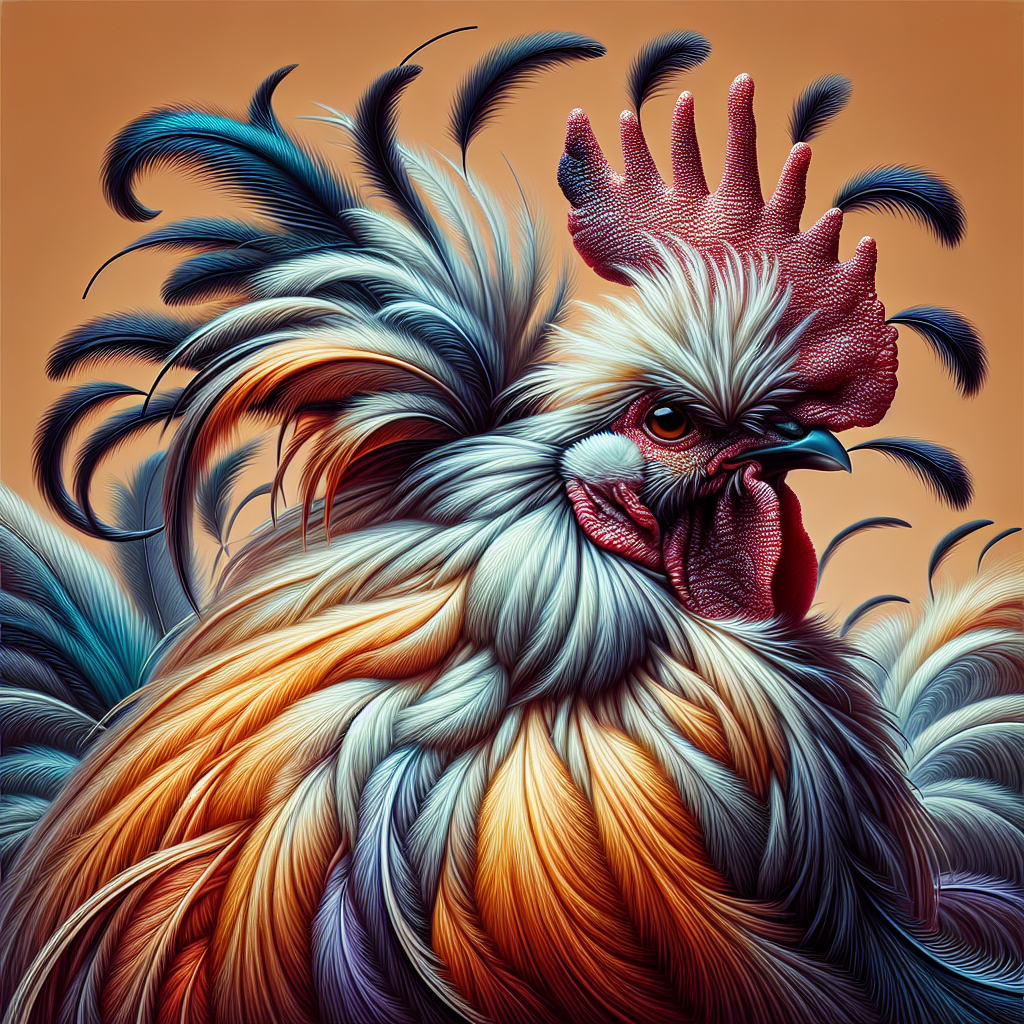Are you curious about which chicken breeds excel in meat production? Look no further! In this article, we will explore the top-ranked chicken breeds specifically known for their exceptional meat production. Whether you’re a backyard farmer or a commercial poultry farmer, finding the right chicken breed can make a significant difference in the quality and quantity of meat you produce. So, let’s take a closer look at the top-rated chicken breeds for meat production and discover which ones might be the perfect fit for your needs.
Introduction
If you’re considering raising chickens for meat production, it’s important to choose the right breed that can provide both quantity and quality. In this article, we will explore some of the top-ranked chicken breeds for meat production. Each breed has its own unique characteristics, advantages, and disadvantages. By understanding these traits, you can make an informed decision about which breed is best for your needs.
Cornish Cross
Description
The Cornish Cross is a popular breed known for its rapid growth and high meat yield. They have a broad and stocky body with white feathers. Their size and shape make them an ideal choice for meat production purposes.
Advantages
One of the key advantages of the Cornish Cross breed is its impressive growth rate. They can reach market weight in as little as 6-8 weeks, making them one of the fastest-growing chicken breeds. This rapid growth translates into high meat production, providing a substantial amount of meat for your table.
Disadvantages
However, the Cornish Cross breed does have some disadvantages to consider. Due to their fast growth rate, they may be more prone to health issues such as heart problems and leg disorders. They also require a specialized diet and careful management to prevent these issues from arising.
Meat Production
When it comes to meat production, the Cornish Cross breed excels. Their meat is known for its tenderness and flavor. Their large size and plump breasts yield generous portions, making them a favorite among meat producers and consumers alike.
White Plymouth Rock
Description
The White Plymouth Rock is a versatile breed that is suitable for both meat and egg production. They have beautiful white feathers and a sturdy physique.
Advantages
The White Plymouth Rock breed offers several advantages when it comes to meat production. They have a good growth rate and can reach market weight in approximately 8-10 weeks. This breed is also known for its calm and docile temperament, making them easier to handle and manage on the farm.
Disadvantages
While the White Plymouth Rock breed has many positive traits, they do have some disadvantages as well. They may not grow as quickly as the Cornish Cross breed, which means a slightly longer wait for meat production. Additionally, their meat yield may not be as high as some other breeds.
Meat Production
The White Plymouth Rock’s meat is flavorful and tender, making it a popular choice among meat enthusiasts. While they may not have the highest meat yield, their versatility as a dual-purpose breed makes them an attractive option for those looking to balance meat and egg production.
New Hampshire Red
Description
The New Hampshire Red is a vibrant breed known for its reddish-brown feathers and stocky build. They are a hardy and robust breed.
Advantages
The New Hampshire Red breed offers several advantages for meat production. They have a relatively good growth rate, reaching market weight in approximately 9-12 weeks. This breed is known for its excellent foraging abilities, which can contribute to lower feed costs and overall production expenses.
Disadvantages
One of the disadvantages of the New Hampshire Red breed is its slightly longer growing period compared to some other breeds. Additionally, while their meat yield is respectable, it may not be as high as other high-production breeds.
Meat Production
The New Hampshire Red’s meat is flavorful and succulent, making it a desirable choice for meat production. Their sturdy build and well-developed musculature contribute to a satisfying meat yield, making them a reliable option for those seeking a good balance between meat production and foraging capabilities.
Jersey Giant
Description
The Jersey Giant is a breed known for its imposing size and striking appearance. They have glossy black feathers and a robust build.
Advantages
One of the key advantages of the Jersey Giant breed is its impressive size, which translates into a generous meat yield. They can reach market weight in approximately 10-12 weeks, offering a good balance between growth rate and meat production. They are also known for their calm and friendly temperament, making them easy to work with.
Disadvantages
However, the Jersey Giant breed does have some disadvantages to consider. Due to their large size, they may require more space and resources compared to smaller breeds. Their prolonged growth period may also increase the overall cost of production.
Meat Production
The Jersey Giant’s meat is flavorful and juicy, making it a satisfactory choice for meat production. Their size and muscular build contribute to a substantial meat yield, offering a satisfying quantity for your dining table.
Brahma
Description
The Brahma is a unique breed known for its enormous size and distinctive appearance. They have feathered legs and feet, along with a majestic presence.
Advantages
The Brahma breed offers several advantages for meat production. They have an impressive growth rate, reaching market weight in approximately 12-16 weeks. Their large size contributes to a significant meat yield, making them suitable for those seeking a larger quantity of meat.
Disadvantages
One of the potential disadvantages of the Brahma breed is their specialized housing requirements due to their size and feathered feet. Additionally, their prolonged growth period may increase the overall cost of production.
Meat Production
The Brahma’s meat is known for its tenderness and rich flavor. Their large size and well-developed musculature contribute to an abundant meat yield, making them a substantial choice for meat production.
Buff Orpington
Description
The Buff Orpington is a breed known for its beautiful buff-colored feathers and gentle disposition. They have a solid and compact build.
Advantages
The Buff Orpington breed offers several advantages for meat production. They have a respectable growth rate, reaching market weight in approximately 10-12 weeks. They are also known for their docile temperament and adaptability to various climates, making them easier to raise and manage.
Disadvantages
While the Buff Orpington breed has many positive traits, they do have some potential disadvantages. Their meat yield may not be as high as some other high-production breeds. Additionally, their buff-colored feathers may require extra care to maintain their cleanliness.
Meat Production
The Buff Orpington’s meat is flavorful and moist, making it a satisfactory choice for meat production. While their meat yield may not be the highest, their overall versatility and ease of management make them an appealing option for those looking for a balanced breed.
Cochin
Description
The Cochin is a breed known for its fluffy feathers and unique appearance. They have a heavily feathered body, including their legs and feet.
Advantages
The Cochin breed offers several advantages for meat production. They have a good growth rate, reaching market weight in approximately 10-12 weeks. Their heavily feathered body provides insulation, making them well-suited for colder climates.
Disadvantages
One of the potential disadvantages of the Cochin breed is their specialized housing requirements due to their heavily feathered body. Their feathers may require extra care to prevent matting and cleanliness issues.
Meat Production
The Cochin’s meat is flavorful and juicy, making it a satisfactory choice for meat production. While their meat yield may not be the highest, their unique appearance and adaptability to colder climates make them an intriguing option for those seeking a balance between aesthetics and production.
Barred Plymouth Rock
Description
The Barred Plymouth Rock is a breed known for its striking black and white striped feathers. They have a sturdy and robust build.
Advantages
The Barred Plymouth Rock breed offers several advantages for meat production. They have a good growth rate, reaching market weight in approximately 8-10 weeks. They are also known for their calm temperament and ease of management.
Disadvantages
While the Barred Plymouth Rock breed has many positive traits, they do have some potential disadvantages. Their meat yield may not be as high as some other high-production breeds. Additionally, their black and white feathers may require extra care to maintain their cleanliness.
Meat Production
The Barred Plymouth Rock’s meat is flavorful and tender, making it a satisfying choice for meat production. While their meat yield may not be the highest, their overall versatility and ease of management make them a desirable option for those looking for a balanced breed.
Conclusion
Choosing the right chicken breed for meat production is a crucial decision for any aspiring poultry producer. Each breed discussed in this article offers its own unique set of advantages and disadvantages. From the rapid growth of the Cornish Cross to the flavorful meat of the New Hampshire Red, there is a breed that suits every meat production need. Consider factors such as growth rate, meat yield, temperament, and special requirements when making your choice. By understanding the characteristics of each breed, you can make an informed decision that will lead to a successful and rewarding meat production venture.




